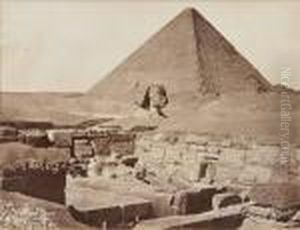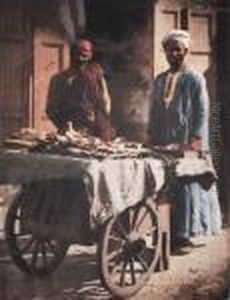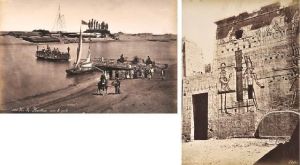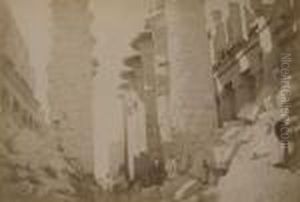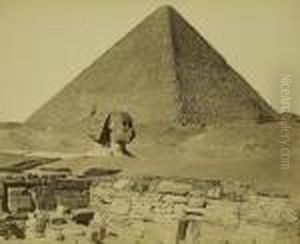J. Pascal Sebah Paintings
J. Pascal Sebah was a pioneering photographer in the Ottoman Empire, known for his comprehensive documentation of the region's people, landscapes, and architectural marvels. Born in 1823 in Constantinople (modern-day Istanbul, Turkey), Sebah was of Syrian/Armenian descent. His work played a crucial role in introducing the visual splendor of the Near East to the Western world during the 19th century, a period when interest in Orientalism was at its peak.
Sebah opened his first photography studio in Constantinople in 1857, at a time when the art of photography was still in its infancy. His studio quickly gained a reputation for high-quality work, attracting not only local clientele but also foreign tourists and dignitaries. Sebah's photographs were known for their meticulous composition and attention to detail, qualities that set his work apart from that of his contemporaries. He frequently ventured outside his studio to capture the landscapes and historical sites of the Ottoman Empire, including Egypt, Palestine, and Syria. These photographs offered viewers a glimpse into regions that were largely unknown to the general public at the time.
In the 1870s, Sebah collaborated with the French photographer, Polycarpe Joaillier, to produce a series of ethnographic and archaeological photographs. This partnership was instrumental in enhancing the scientific and artistic value of Sebah's work, combining Sebah's photographic skills with Joaillier's technical knowledge. Together, they produced some of the most detailed and accurate depictions of the region's ancient ruins, artifacts, and costumes, contributing significantly to the fields of archaeology and anthropology.
J. Pascal Sebah's legacy was continued by his son, Jean Pascal Sébah, who took over the studio after his father's death in 1886. Jean Pascal further expanded the studio's reputation by collaborating with the German photographer, Johannes Geiser, and together they continued the tradition of producing high-quality images of the Middle East. J. Pascal Sebah's contributions to photography not only provided invaluable documentation of the Ottoman Empire but also helped to shape the Western perception of the East. His work remains a vital resource for historians, art historians, and scholars of the region, offering insights into the cultural and architectural heritage of the Near East during the 19th century.
